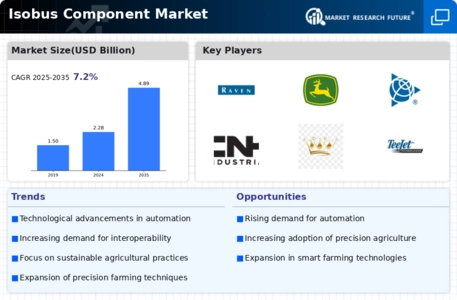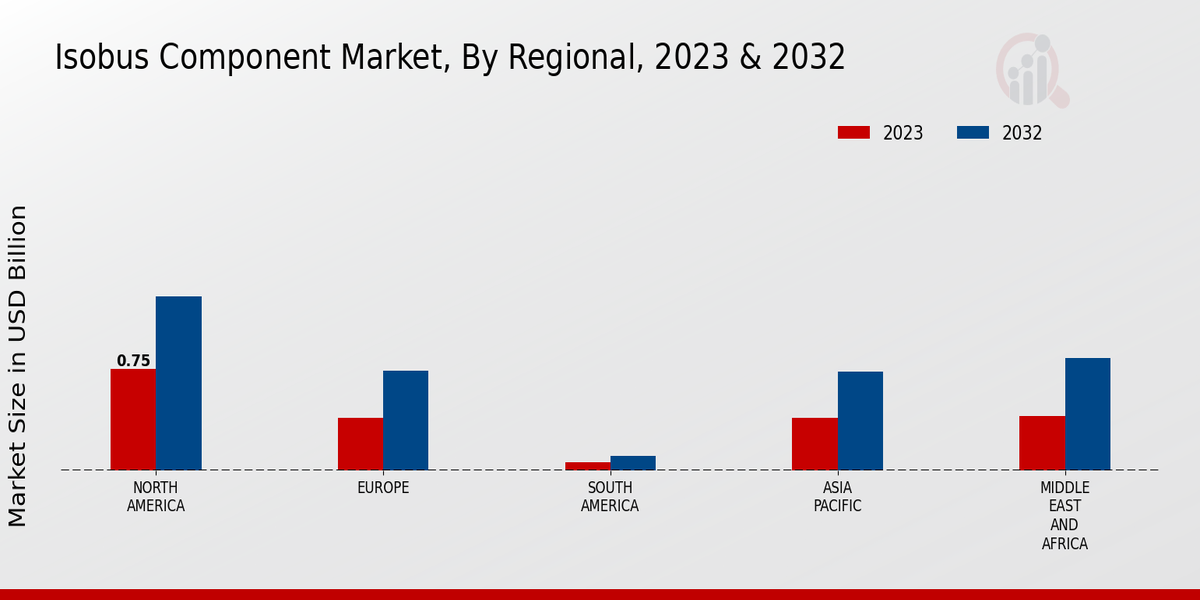Market Growth Projections
The Global Isobus Component Market Industry is projected to experience robust growth in the coming years. With an anticipated market size of 2.28 USD Billion in 2024, the industry is expected to expand significantly, reaching 4.89 USD Billion by 2035. This growth trajectory suggests a compound annual growth rate of 7.18% from 2025 to 2035. Such projections indicate a strong demand for Isobus components, driven by technological advancements, increased agricultural mechanization, and a growing emphasis on precision farming. Stakeholders are likely to capitalize on these trends to enhance their market presence and drive innovation.
Increased Focus on Sustainability
The Global Isobus Component Market Industry is benefiting from an increased focus on sustainability within the agricultural sector. As environmental concerns rise, farmers are seeking solutions that minimize their ecological footprint. Isobus components facilitate more efficient use of resources, such as water and fertilizers, thereby supporting sustainable farming practices. For example, precision application technologies enabled by Isobus can significantly reduce chemical runoff and promote soil health. This growing emphasis on sustainability is likely to drive demand for Isobus technology, as stakeholders aim to balance productivity with environmental stewardship.
Government Initiatives and Support
Government initiatives aimed at modernizing agriculture are propelling the Global Isobus Component Market Industry forward. Various countries are implementing policies that encourage the adoption of advanced agricultural technologies, including Isobus components. For instance, subsidies and grants for farmers investing in modern machinery equipped with Isobus technology are becoming more common. These initiatives not only enhance productivity but also promote sustainable farming practices. As governments recognize the importance of technological integration in agriculture, the market is likely to witness substantial growth, aligning with global efforts to improve food security and agricultural efficiency.
Rising Demand for Precision Farming
The Global Isobus Component Market Industry is significantly influenced by the rising demand for precision farming techniques. Farmers are increasingly adopting data-driven approaches to enhance productivity and sustainability. Isobus components play a crucial role in this transition by enabling interoperability among various agricultural machines, thus allowing for more efficient resource management. For example, the use of Isobus technology allows for real-time monitoring and control of field operations, leading to reduced waste and improved crop yields. This trend is expected to contribute to the market's growth trajectory, as stakeholders recognize the value of precision agriculture in meeting global food demands.
Growing Agricultural Machinery Market
The Global Isobus Component Market Industry is closely linked to the growth of the agricultural machinery market. As the demand for advanced farming equipment rises, so does the need for Isobus components that ensure compatibility and communication between different machines. The expansion of the agricultural machinery sector, driven by factors such as increasing mechanization and the need for higher efficiency, is expected to bolster the Isobus market. With projections indicating a growth from 2.28 USD Billion in 2024 to 4.89 USD Billion by 2035, the synergy between these markets is poised to create substantial opportunities for stakeholders.
Technological Advancements in Agriculture
The Global Isobus Component Market Industry is experiencing a surge in demand due to rapid technological advancements in agricultural machinery. Innovations such as precision farming and automation are driving the integration of Isobus components, which facilitate seamless communication between different equipment. For instance, the adoption of smart tractors equipped with Isobus technology enhances operational efficiency and reduces labor costs. As farmers increasingly seek to optimize their yield, the market is projected to grow from 2.28 USD Billion in 2024 to 4.89 USD Billion by 2035, reflecting a compound annual growth rate of 7.18% from 2025 to 2035.


























Leave a Comment